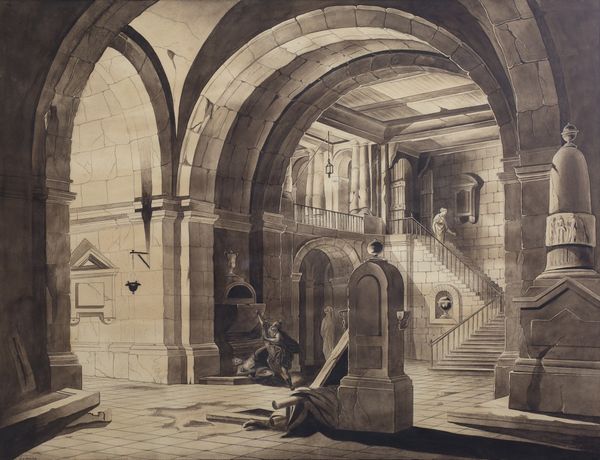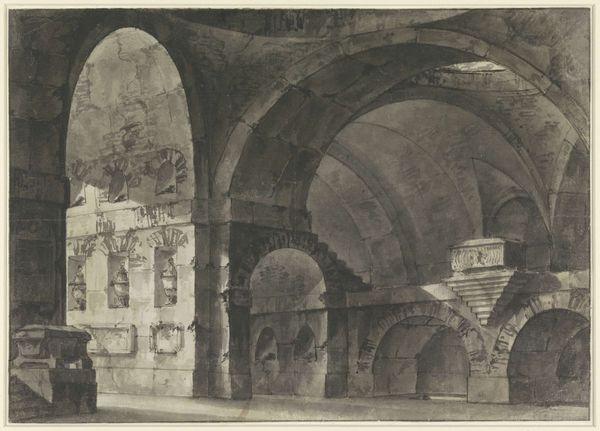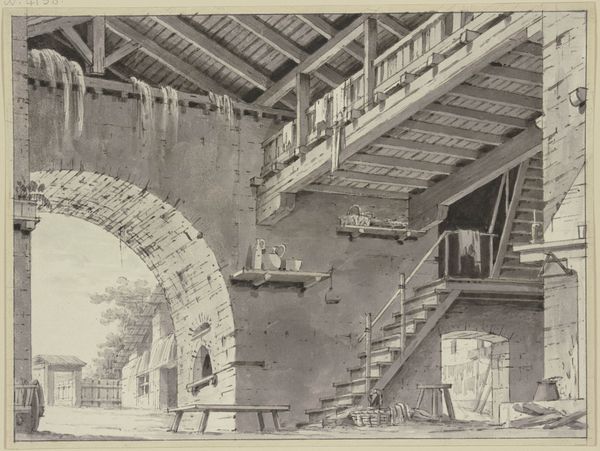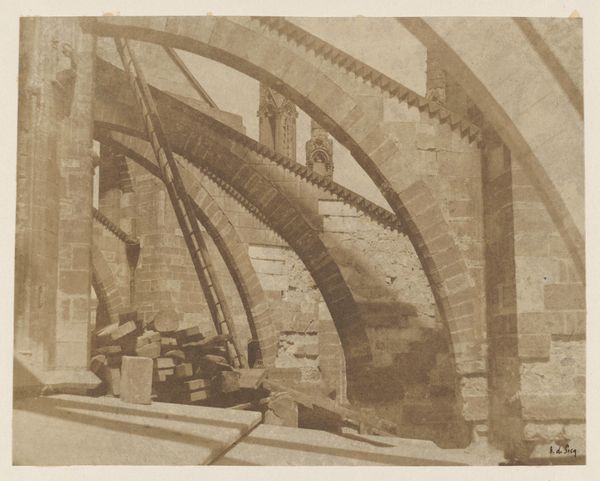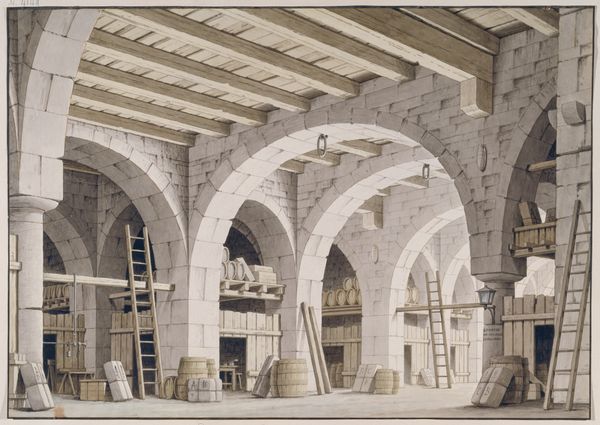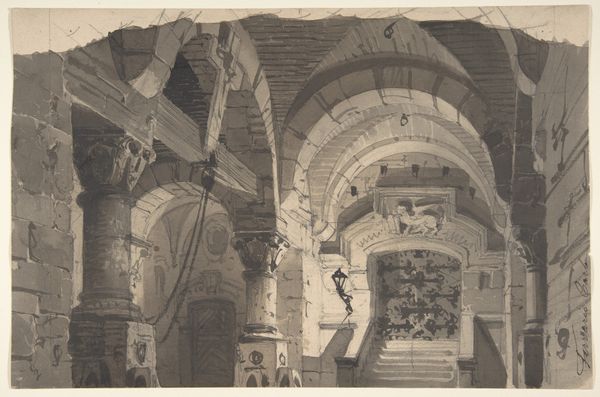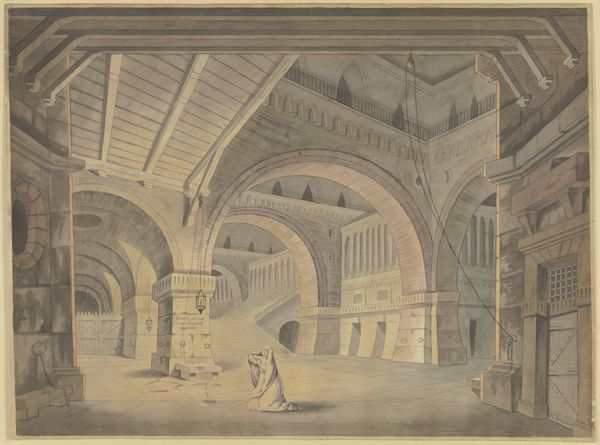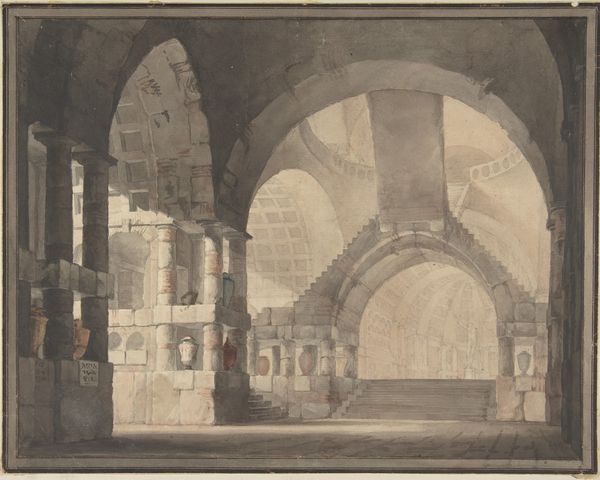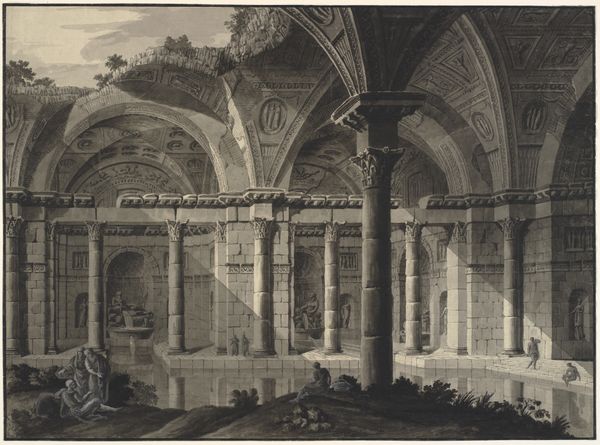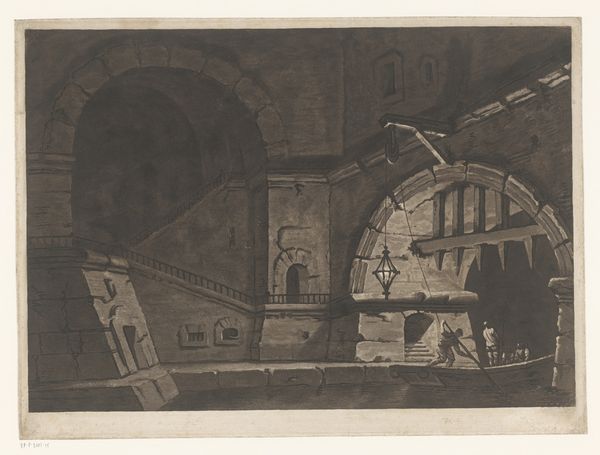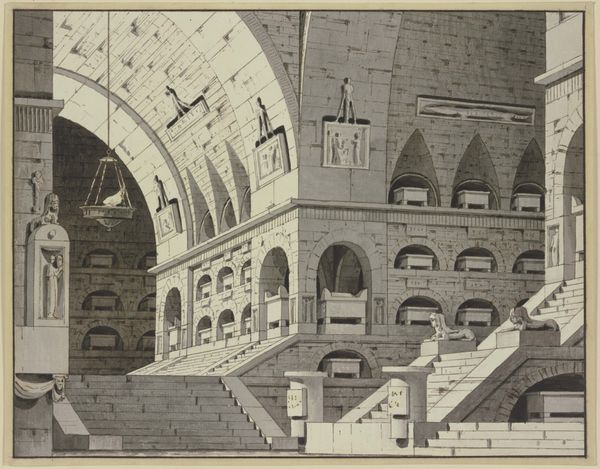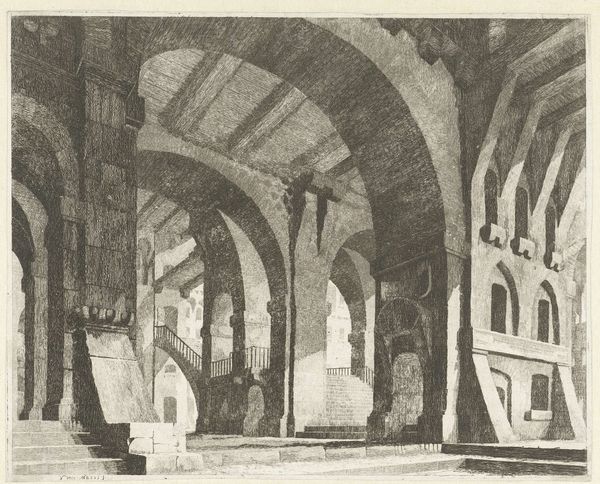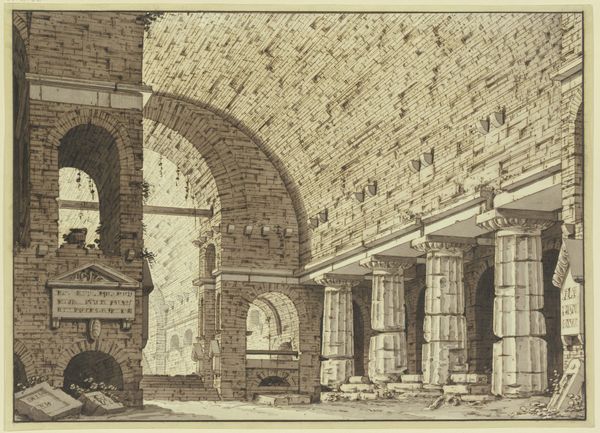
Teaterdekoration: En hvælvet kælder med temmelig svære, lave bueslag; i baggrunden fører en trappe op til gården ell. gaden; en lille lampe oplyser den venstre del af rummet. I krogen sidder en mand i ridedragt, en pige kommer ned af trappen. 1727 - 1827
0:00
0:00
drawing, ink, architecture
#
drawing
#
landscape
#
perspective
#
ink
#
architecture
Dimensions: 449 mm (height) x 585 mm (width) (billedmaal)
Curator: Welcome. Here we have “Teaterdekoration: En hvælvet kælder med temmelig svære, lave bueslag; i baggrunden fører en trappe op til gården ell. gaden; en lille lampe oplyser den venstre del af rummet. I krogen sidder en mand i ridedragt, en pige kommer ned af trappen”, a theater decoration, from between 1727 and 1827 by Benjamin Schlick. The artist used ink to depict an indoor architectural scene. Editor: It’s quite moody! All that vaulted stone, the figures lurking in shadow. There's definitely some kind of drama about to unfold, or that maybe already has! What a set! Curator: Exactly. Schlick was exploring how architectural spaces can evoke particular emotions, anxieties, or anticipation in an audience. The low arches pressing down, that flickering lamplight... Editor: Yeah, that lighting is key, isn’t it? The dark wash of the ink…makes me think about imprisonment. Curator: And that tension plays right into theater design, it draws the audience into the world. But there's also a social context here, looking at theaters during Schlick's time. How they were spaces for class mixing and even political discourse. The location here at SMK, Statens Museum for Kunst also contextualizes the display as something of historic national importance. Editor: Hmmm…it could also just be a super atmospheric tavern! But that’s your historian brain doing its thing. My own intuition, however, responds to the play of light and shadow—it's just so damn evocative. And those arches? They almost have a breathing, organic quality that speaks to some grand story, if I were an actor I could easily inhabit that character’s story Curator: Indeed. I would venture to say it's about staging, it certainly captures the artifice, while also using light and architectural structure. Together, Schlick provides us with a story that would never age, even if trends in theaters changed, what makes us drawn to it remains as it were hundreds of years ago. Editor: Precisely, thanks for a historical analysis! A fascinating interplay, and who wouldn't feel moved in such a space, however fictive!
Comments
No comments
Be the first to comment and join the conversation on the ultimate creative platform.
